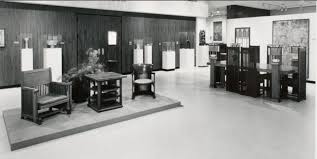
International Museum Day 2017
The worldwide community of museums celebrate International Museum Day on and around May18, 2017 around the theme Museums and contested histories: Saying the unspeakable in museums.
This theme focuses on the role of museums that, by working to benefit society, become hubs for promoting peaceful relationships between people. The acceptance of a contested history is the first step in envisioning a shared future under the banner of reconciliation.
Saying the unspeakable in museums looks at how to understand the incomprehensible aspects of the contested histories inherent to the human race. It also encourages museums to play an active role in peacefully addressing traumatic histories through mediation and multiple points of view.
The Gamble House joins cultural institutions of all types around the world in this celebration, which focuses on the link allowing for a vision of the future above and beyond taboo subjects and towards a better understanding of one another.
Exclusionary Covenants in Pasadena
Exclusionary covenants –contractual agreements that prohibited the purchase of a piece of property by members of particular racial or ethnic groups—played a major role in contributing to residential segregation in Pasadena and other cities nationwide in the early twentieth century. In 1892, federal courts ruled that state and municipal governments could not themselves discriminate against members of certain groups. Instead, they allowed individual property owners to enter residential contracts that could discriminate or prohibit selling property to certain groups of people. With this green light, racially restrictive covenants became common in many communities in the early twentieth century, most using the term “non-Caucasians” to define those who could not purchase property. Cities throughout Southern California, including Pasadena, applied restrictive covenants against African Americans, Latinos, Asian Americans, and sometimes Jews, Italians, Armenians, Russians and others seen at the time as racially undesirable.
In 1919, the Supreme Court of California handed down a ruling that invalidated restrictive covenants against property purchases. However, city leaders, developers, realtors, and homeowners’ associations in Pasadena and other communities quickly added restrictive covenants against the occupancy of homes by certain racial and ethnic groups, a restriction that the Supreme Court allowed. By the mid-1920s, the typical deed of most homes brought or sold in Pasadena stated that, “said premises shall not [be] … occupied or used by any person or persons other than those of the Caucasian race, provided, however, that the foregoing restriction shall not be construed to prohibit the keeping of domestic servants of any race.” The covenants were highly effective, and by the 1920s few African Americans, Latinos, or Asian Americans resided in the restricted areas of Pasadena. In 1948, the U.S. Supreme Court declared restrictive covenants unconstitutional, yet efforts to exclude members of certain racial and ethnic groups persisted in Pasadena for decades after the ruling.
Sources:
• Flamming, Douglas. Bound for Freedom: Black Los Angeles in Jim Crow America. Berkeley: University of California Press, 2005.
• Wild, Mark. Street Meaning: Multiethnic Neighborhoods in Early Twentieth-Century Los Angeles. Berkeley: University of California Press, 2005.


Leave a Reply